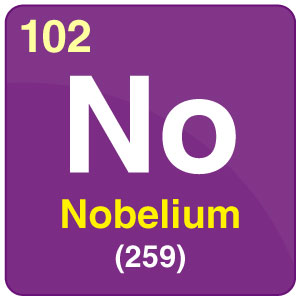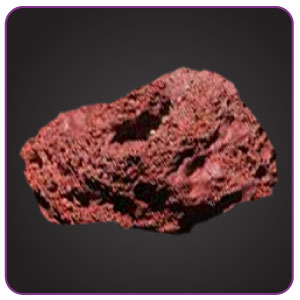Nobelium

| Symbol | No |
| Atomic Number | 102 |
| Atomic Mass | 259 g.mol -1 |
| Discovered by | Nobel Institute for Physics in 1957 |

Chemical Properties of Nobelium
| Group | Actinides | Melting point | 827°C, 1521°F, 1100K |
| Period | 7 | Boiling point | Unknown |
| Block | f | Density (g cm−3) | Unknown |
| Atomic number | 102 | Relative atomic mass | [259] |
| State at 20°C | Solid | Key isotopes | 259 No |
| Electron configuration | [Rn] 5f14 7s2 |
What is Nobelium?
- Nobelium is named after Alfred Nobel, the inventor of dynamite. It is a man-made element made in low quantities. It is a part of the actinide series. Until now twelve isotopes have been determined among them 259 No is the most stable isotope. Nobelium is highly radioactive and is a synthetic metal. It can be produced by a nuclear bombardment that is by irradiating a californium-249 target with carbon-12 ions.
- They are generally difficult to detect. In the periodic table, one can find this metal to the left of the actinide lawrencium and to the right of actinide mendelevium. It is predicted that Nobelium is a divalent metal. The behaviour of this metal is better known only in aqueous solution. Hence a lot of the properties of the element are unknown.
- An atom of Nobelium consists of a hundred and two electrons. Three of these electrons behave as valence electrons.
Uses of Nobelium
- It has no uses other than for scientific research.
Certain Facts About Nobelium
- Since it possesses a short-half life, it does not have any harmful effects on the environment. It is not yet discovered in the earth’s crust and it can be easily decomposed into other elements due to its instability.
Frequently Asked Questions – FAQs
Q1
What is the period number of nobelium?
The period number of nobelium is 7.
Q2
What is the electron configuration of nobelium?
The electron configuration of nobelium is [Rn] 5f14 7s2.
Q3
What is the atomic mass of the nobelium element?
The atomic mass of the nobelium element is 259 g/mol.
Q4
What is the atomic number of nobelium?
The atomic number of meitnerium is 102.


Comments